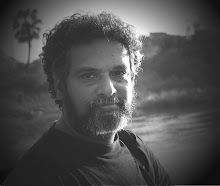Desh Parva 10th October
Desh Parv has been divided into five segments namely Kul Varnika ( Commonwealth literature in performance), Desaj (Diverse expressions of the nations), Nritya Rupa (Dances of India) Natya Darshan (A vision of theatre in India), Sangeet Marg ( Paths of Indian Music) encompassing all forms of performing arts. The details about the five art forms are as:
Kul Varnika :
11:00 am – 1:00 pm Meghdoot III, SNA New Delhi
Navtej Singh Johar, Delhi:
Navtej Singh Johar bases his presentation on Doris Lessing’s novel, “The grass is singing”. This novel, written almost entirely in the form of an extended flashback, details the mental, spiritual, financial and marital disintegration of Dick and Mary Turner, white farmers struggling to make a living off a sun-baked farm in South Africa.
Priti Patel, Kolkata:
Priti Patel’s presentation is based on the verses of Bangladesh’s Poet Jasimuddin’s Nakshi Kanthar Math. The work has been hailed a masterpiece because of its simplicity, its charm and its deep humanity. In this saga of loss and separation, hunger and frustration, the villager displays the values of constancy, courage, love and hope. There are few who can dignify, as Jasimuddin does, the common folk by the quality of their love, and few who can enhance a poem by its power to portray that love.
Nritya Rupa:
6.00 pm Kathak Kendra North Delhi
Kathak
&
8.45 pm Meghdoot I
Manipuri: NATASANKIRTANA & VASANT RAS
KUCHIPUDI: Presented by Jayarama Rao’s group
Natya Darshan :
6.30 pm Shri Ram Centre Auditorium, New Delhi
VASTRAHARAN (Marathi- Malvani dialect)
Written by Gangaram Gavankar
Direction: Ramesh Randive

The amateur actors of the village are bursting with enthusiasm to put up the play, but they have their whims and fancies coupled with tricky, badly-timed real life situations. As a result, the drama that happens behind the scenes turns out to be far more theatrical than the actual play. Vastraharan is the fun-filled, humorous story of that drama.
Every traditional play in Maharashtra starts with Nandi, or invocation to the gods. As the Nandi is about to start, they find the musicians missing. They have been whisked away to perform at the funeral of an old woman of the village who has died at the age of 100. So what happens to the music of the ‘musical’ Vastraharan?
The man playing Draupadi gets the news that his wife has given birth to his eighth child – a son after seven girls. He leaves the stage, runs home and gets dead drunk! Who then plays Draupadi?
The actor playing Lord Indra gets actually possessed by a god (!) and ‘demands’ that the Tamasha dancer sitting in the audience perform for him. Is his demand met?
Dusshasan, the villain who is supposed to do the disrobing, refuses to disrobe the new Draupadi. Who then fills his place?
The play is directed by Ramesh Randive, and is presented by Bhadrakali Productions, Mumbai.
Director’s Note:
First staged in 1980 as an amateur play with mill workers as actors, Vastraharan had no pretension to any form or style. Its mainstay was the raw energy, humour and innocence of its actors. In spite of being entrenched in a small region of coastal Maharashtra, it did not draw from any folk tradition or style. The narrative structure being a play within a play, it was necessary to have a stage as well as backstage for the story to unfold. One innovative idea was to have only ribbons hung on the stage in place of the curtain so that the ‘action’ on stage is seen.
To borrow the words of noted author and playwright P.L.Deshpande, Vastraharan is a desi (native) farce.
-- Ramesh Randive
11:00 am Meghdoot II
KUTIYATTAM: Sanskrit theatre tradition of Kerela
Kutiyattam is an ancient form of Sanskrit theatre still extant in Kerala. A reference to Kutiyattam in Cilappatikaram, the famous Tamil poem dated between the second century BC and fifth century AD, provides valid evidence that it came into existence about 2000 years ago. Men (Chakkiyars) and women (Nangiyars) act Kutiyattam in kuttampalam theatres constructed in accordance with the prescriptions set down by the Natyasastra.
Kutiyattam presents only certain ankas (acts) from classics by famous Sanskrit playwrights like Bhasa, Kalidasa, Sudraka, Harsha, and Bodhayana. The acting preserves the fourfold conventional aspects of abhinaya: vacika (vocal), angika (physical), sattvika (psychological), and aharya (decorative). Footwork and choreography are rhythmic, to the beat of percussion. The language is exclusively Sanskrit and the enactment a prolonged process over a number of nights, taking several hours each night through extensive elaboration of single words and lines – the most important part of acting Kutiyattam.
Kuttiyattam is being presented by Sangeet Natak Akademi’s Kuttiyatam Kendra at Thiruvananthapuram. Margi Sathi and Margi Madhu Chakyar, two of the leading exponents of Kutiyattam, are featured. Margi Sathi trained at Kerala Kalamandalam under various gurus. She has travelled widely and performed extensively both within the country and abroad. Margi Sathi performed at the UNESCO headquarters in Paris before a specially invited assembly to mark the UNESCO’s proclamation of Kuttiyattam as a World Heritage Art. She has received the Sangeet Natak Akademi Award besides other honours.
Margi Madhu also trained under several gurus and has performed extensively within the country. He has also participated in major national and international seminars and presented papers on Kuttiyattam. He is currently teaching in the Department of Theatre, Sreesankaracharya University of Sanskrit, Kalady, Kerala.
For details contact:
Ruchi Dayal: 9718265679



0 Comments:
Post a Comment
Subscribe to Post Comments [Atom]
<< Home